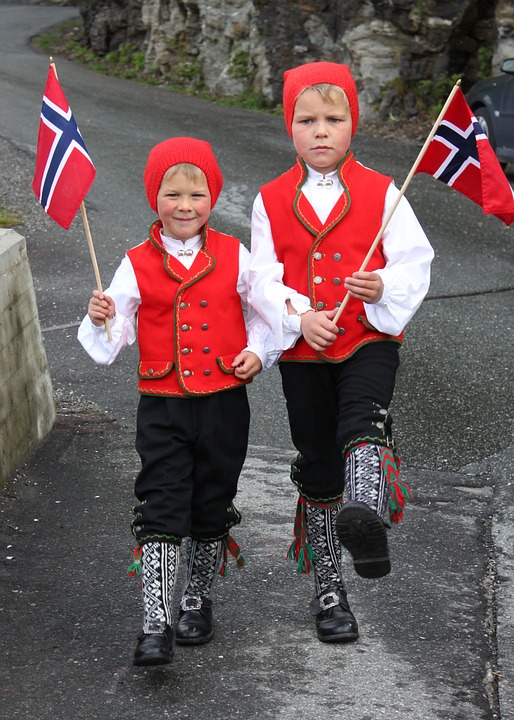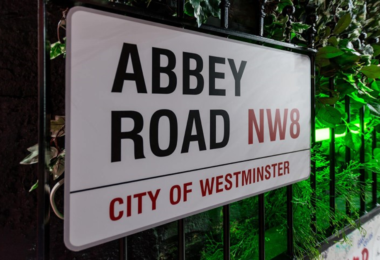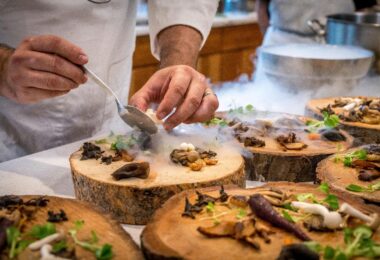Learn how the Scandinavian country honours its youth, from coming-of-age ceremonies to end-of-school celebrations.
Many mistakes Norway for Sweden or other Nordic countries. However, Norway is a very unique country with very distinctive traditions. This Northern European country is not only home to massive petrol sources or the world-famous music band A-ha, it is a land most importantly home to strong family values. From extended maternal and paternal leave to the normalisation of public breastfeeding and its land tenure system – all facilitate this family-friendly environment.
Moreover, the Viking land does not just put family values as a priority in its society. It also celebrates its youth and values it as an important worth. As a matter of fact, there are some Norwegian coming-of-age traditions many would have never guess existed. Here is how Norway celebrates its youth:
Children’s parade for Norway’s Constitution Day
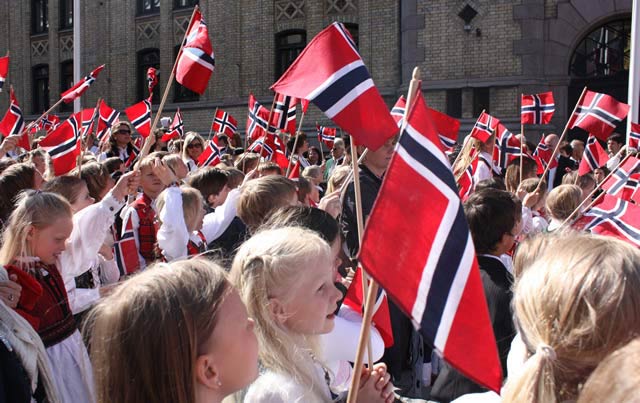
Norwegian Constitution Day is an extremely important day for Norwegian. Every 17th March, the whole nation celebrates it. It has a non-military nature, which makes it a very unique national day. However, it does consists of marching bands and the entire nation parading at the same time. It comes as not surprise that the event is broadcasted on television every year. Those who parade in Oslo receive greetings from the royal family from their palace balcony. The most noteworthy part is the children’s parade. Children play a special role in this event, as the biggest part of the event dedicated to them.
As most children will wear their regional Bunad, Norway’s traditional clothing, they parade while singing traditional songs. The parade always concludes with the national anthem, “Ja, vie elsker dette landet” and the royal anthem, “Kongesangen”. Children’s parade is very important for pupils as it represents a strong patriotism and love for their country. Children would typically wave home-made Norwegian flags, carry school banners and shout “Hurra!” throughout the parade.
Confirmation
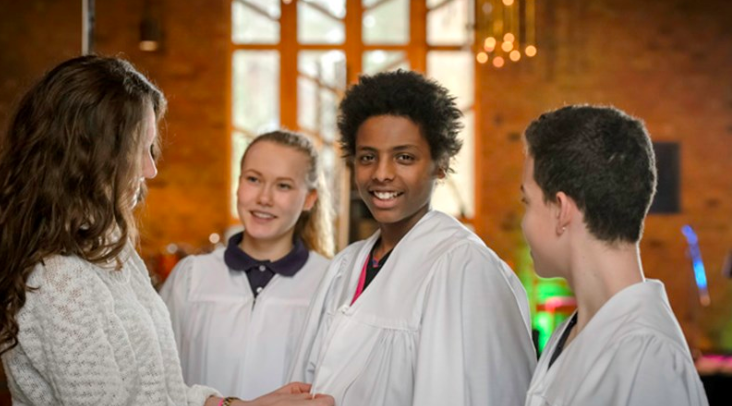
This is Norway’s proper coming-of-age ceremony. The Church of Norway explains: “All 14-year-olds are invited to take part in confirmation in the Church of Norway.” Although confirmation within the church is for those who are baptised, a teen might also celebrate their confirmation with the State. Nowadays, the ritual has become more symbolic a civil confirmation has become a popular alternative.
Religious or not, Norwegian confirmation is a very important ceremony that marks the transition from childhood to adulthood. Many would argue it to be the most important days in a Norwegian’s life. Indeed, Confirmation us to be mandatory by law between 1736 until 1912. Moreover, it was a legal necessity to gain the rights of adulthood. Adulthood in Norway would have then meant to enter military service, get married, become a godparent or testify in court. Today, confirmation is not obligatory anymore but is still celebrated, regardless of the religion.
Saint Lucia Day
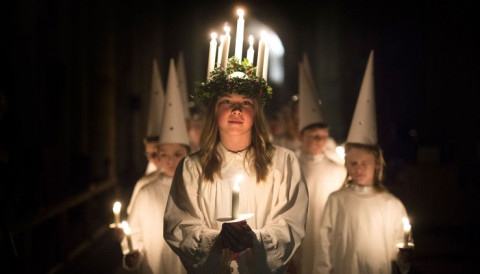
This celebration is not only celebrated in Norway – it is a part of Scandinavia’s Christmas traditions. Saint Lucia Day is known as “Santa Lucia” in Norway, Sweden and Denmark. It is held in honour of the woman said to have been one of the first Christian martyrs in history. Saint Lucia plays an important role in Scandinavian Christian celebrations. However, she does not receive the same recognition as other martyrs such a Joan of Arc.
Scandinavians celebrate “Santa Lucia” on 13th December, with candlelight and traditional candlelit processions. Traditionally in schools, a blonde girl would be chosen to play Lucia. The lucky chosen girl is called the “Lussibrud”, the Lucy Bride. Lussibrud dresses in a white robe with a crown of lights on her head and holds a candle in her hand. She also leads a group of girls. Her group carries baskets of saffron buns or ginger cookies to hand out, while singing “Santa Lucia”. Many young girls look forward to this day.
Russ celebrations
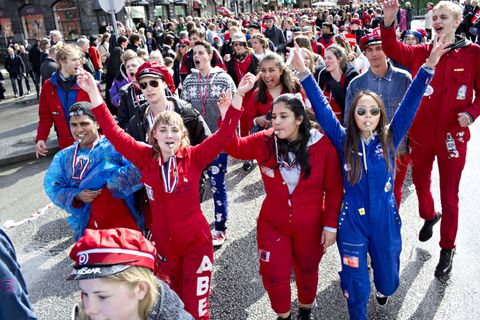
When you hear of Norway, you would probably not imagine its population to be such party people. Well, they are. Norway’s high school graduates celebration is called ‘russefeiring’. It has nothing to do with Russia, but it does involve to a certain extent hard liquor. Every year, Norwegian students party through the month of May. The Russ celebrations start mid-April and end on May 17th, on Norway’s Constitution Day. The events mark the students’ thirteen years of school.
Students, aged then 18 in their last high school year, receive blue, red, black or green overalls. The colours depend on the students’ path of education and schools’ programs, however, the most common colour is red. Red, known as “rødruss”, symbolizes general studies, “Allmennfag” in Norwegian. This means they have completed the regular Norwegian high school diploma.
Russ participants would also wear caps with knots tied into their tassels as a symbol different celebratory accomplishments. Moreover, the knots means anything from spending a night in a tree to winning a drinking competition. The Russ also partake in the Constitution Day’s parade, wearing their overall.


